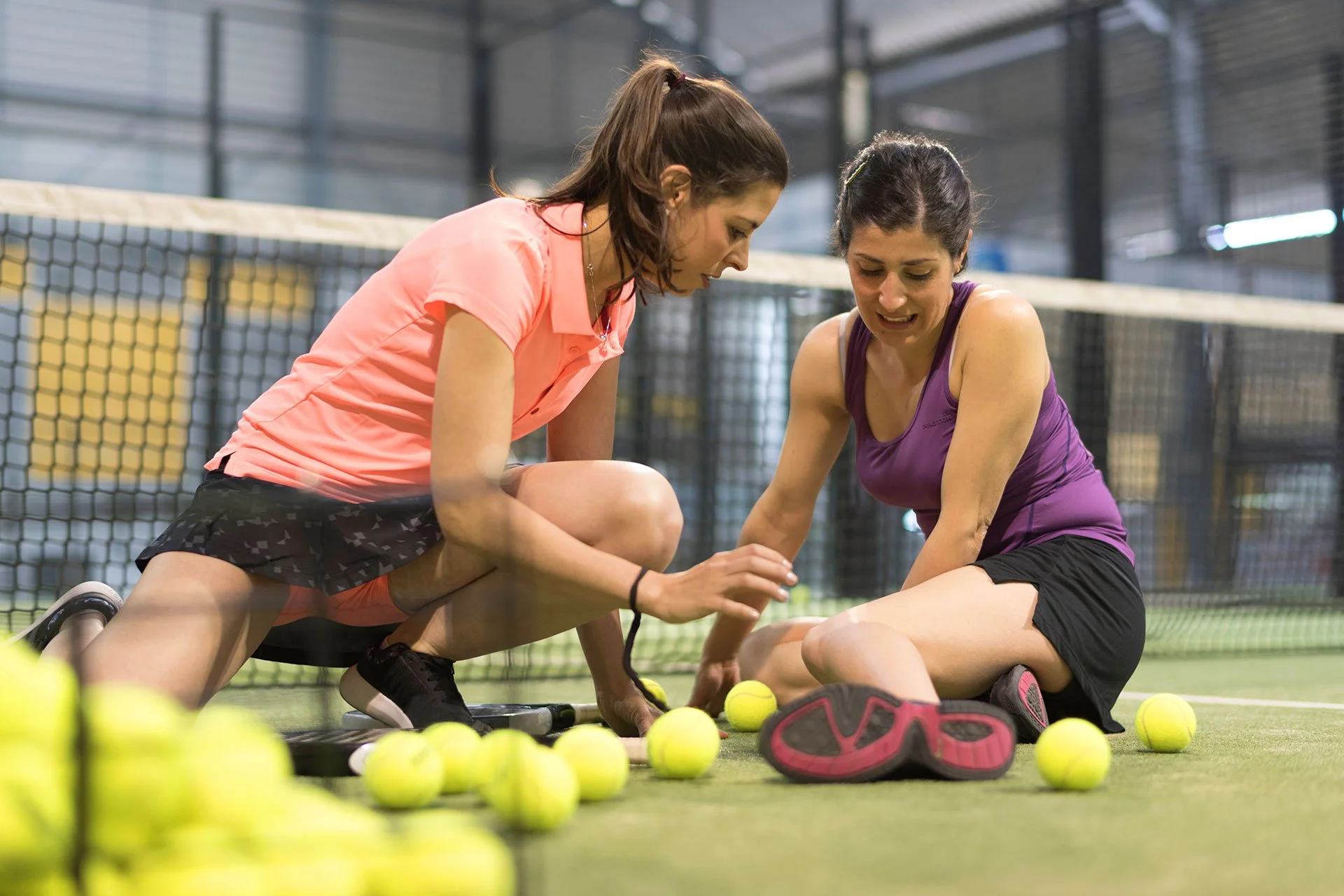How To Prevent Common Padel Injuries Before They Happen
Padel is fast-paced, fun, and addictive—but like any sport, it comes with its share of physical risks. From sore shoulders to tight calves, small tweaks and strains can add up if you’re not paying attention to how your body moves and recovers.
The good news? Most padel-related injuries are preventable. With the right habits—both on and off the court—you can protect yourself, keep your sessions consistent, and avoid that frustrating cycle of injury and recovery.
Here’s a guide to understanding the most common padel injuries, and what you can do to prevent them before they stop you in your tracks.
Source: Padel39
Common Padel Injuries (And Why They Happen)
Before diving into prevention, it’s helpful to know what you're up against. Here are some of the most frequent issues players face:
Tennis elbow (lateral epicondylitis): Overuse of the forearm muscles, usually from improper technique or gripping the paddle too tightly.
Shoulder strain: Often from repetitive overhead shots or poor mobility.
Lower back pain: Caused by rotational stress, weak core muscles, or poor posture.
Knee and ankle sprains: A result of sudden direction changes, improper footwork, or inadequate warm-up.
Calf or Achilles tendon issues: Common in players who don’t stretch or warm up their lower legs properly.
Now, let’s talk prevention—not with gimmicks, but with real habits that work.
1. Warm Up With Purpose
Walking straight onto the court and swinging away is a recipe for trouble. A proper warm-up increases blood flow, activates key muscles, and mentally prepares you for action.
Here’s a quick structure that works:
5 minutes light cardio (jog, skip, side shuffles)
Dynamic mobility (leg swings, arm circles, torso rotations)
Movement drills (short sprints, side steps, shadow volleys)
A good warm-up can be the difference between feeling sharp and pulling a muscle during the first rally.
2. Strengthen Your Foundation
A stronger body is a more resilient one. You don’t need to train like a bodybuilder—but focusing on key muscle groups will make you more injury-proof.
Areas to strengthen:
Forearms and grip: Reduces the strain that leads to tennis elbow
Shoulders and rotator cuff: Improves overhead control
Core: Supports balance and rotation
Glutes and legs: Drives explosive movement and knee stability
Bodyweight exercises, resistance bands, and kettlebells can go a long way if used consistently.
3. Focus On Technique (Not Just Power)
A lot of padel injuries happen because players compensate. Instead of using proper mechanics, they muscle through shots using the wrong joints or posture.
Key areas to watch:
Gripping the paddle too tightly (this fatigues your forearm quickly)
Smashing with your shoulder instead of your full body rotation
Poor foot positioning that overloads your knees and ankles
If in doubt, take a lesson or film yourself—small adjustments can save months of rehab later.
4. Stretch And Recover Like You Mean It
Mobility is just as important as strength. Post-match stretching helps restore flexibility, reduce tightness, and keep your joints happy.
Try focusing on:
Hamstrings, quads, and calves
Hips and lower back
Shoulders and wrists
Add foam rolling, light yoga, or massage into your routine on rest days. Recovery isn’t lazy—it’s smart.
5. Listen Go Your Body (Not Just The Scoreboard)
It’s easy to push through discomfort because you're in the zone or trying to win. But most injuries start as small warnings—a tight forearm, a twinge in your knee, or a sore lower back.
Instead of ignoring them:
Modify your next match (shorter duration, easier pace)
Use supportive gear (knee sleeves, elbow braces) temporarily
Take a day off and focus on mobility instead of playing through pain
You’re not losing momentum—you’re investing in longevity.
6. Rotate Shoes And Keep Them Court-Ready
Padel involves a lot of side-to-side movement. Playing with worn-out or inappropriate shoes increases the chance of ankle rolls, plantar fasciitis, and knee problems.
Look for shoes specifically made for padel or tennis with:
Lateral support
Good grip on the court surface
A snug, stable fit around the ankle
Check the tread regularly and rotate pairs if you play more than twice a week.
7. Hydrate And Fuel Your Body Right
Injury prevention isn’t just about movement—it’s also about what you put into your body. Dehydrated muscles cramp faster. Undernourished joints feel stiffer.
Aim for:
Water before, during, and after play
Electrolytes if you’re sweating heavily
Protein and anti-inflammatory foods post-match (think salmon, greens, berries)
A well-fueled body recovers faster and performs better.
Final Thoughts: Play Hard, But Play Smart
Preventing padel injuries doesn’t mean holding back—it means playing smarter. A strong, mobile, well-prepared body can handle the demands of the game and keep you on court consistently, not stuck on the sidelines.
So the next time you grab your paddle, remember: it’s not just about the win today. It’s about building a body that lets you play this sport you love for years to come.
Consistency. Awareness. And a bit of self-care. That’s the real winning formula.

